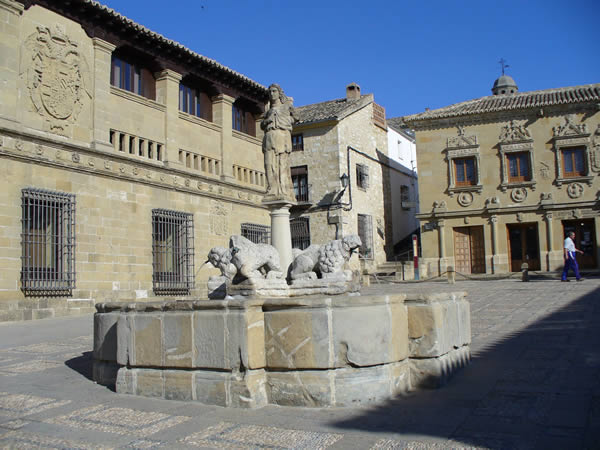This post is also available in:
![]() Deutsch
Deutsch ![]() Italiano
Italiano ![]() Português
Português ![]() Español
Español
The small town of Baeza which has only 15,000 inhabitants is a small jewel of Renaissance architecture. Baeza is located about 770 meters high on the hills overlooking the region of La Loma and Las Villas, just 10 km from Úbeda, on the right bank of the valley of the Guadalquivir river. Both towns were declared UNESCO World Heritage Sites in 2003. Their historic centers are the first example of urban planning of Renaissance civil architecture in early 16th century Spain.
Despite having Roman origins and being an important center during the Arab occupation, Baeza is now known thanks to the work of architects such as Andrés de Vandelvira. These architects built some of the best examples of Italian Renaissance architecture found in Spain. Baeza in fact appears more like an Italian than a Spanish town, with an unusual sense of light, order and proportion.
WHAT TO SEE: THE MAIN ATTRACTIONS OF BAEZA
The visit of the city can start from the small plaza del Populo, also known as plaza de los Leones. Here we can admire the sixteenth-century Casa del Populo, in Plateresque style, as well as the Fuente de Los Leones and the Carniceria (an old butcher shop).
Not far away is the Plaza de Santa Maria with a monumental fountain from the 16th century where the Casas Consistoriales, the 17th century Seminary and the Gothic-Renaissance Cathedral of Santa María are located. The latter is a 16th century work by Andrés de Vandelvira. Another interesting building is the Palacio de Jabalquinto, an Isabelline-style building designed by Juan Guas.
Among the main Renaissance civil buildings in Baeza are the University, founded in 1538, and the 16th century Ayuntamiento built, like the cathedral, designed by Andrés de Vandelvira. Other interesting buildings are located in the squares of Plaza de España and Paseo de la Constitucíon. The gates of Ubeda and Cordoba and the arch of Baeza are among the few remains of the Arab fortifications visible today.
This post is also available in:
![]() Deutsch
Deutsch ![]() Italiano
Italiano ![]() Português
Português ![]() Español
Español
